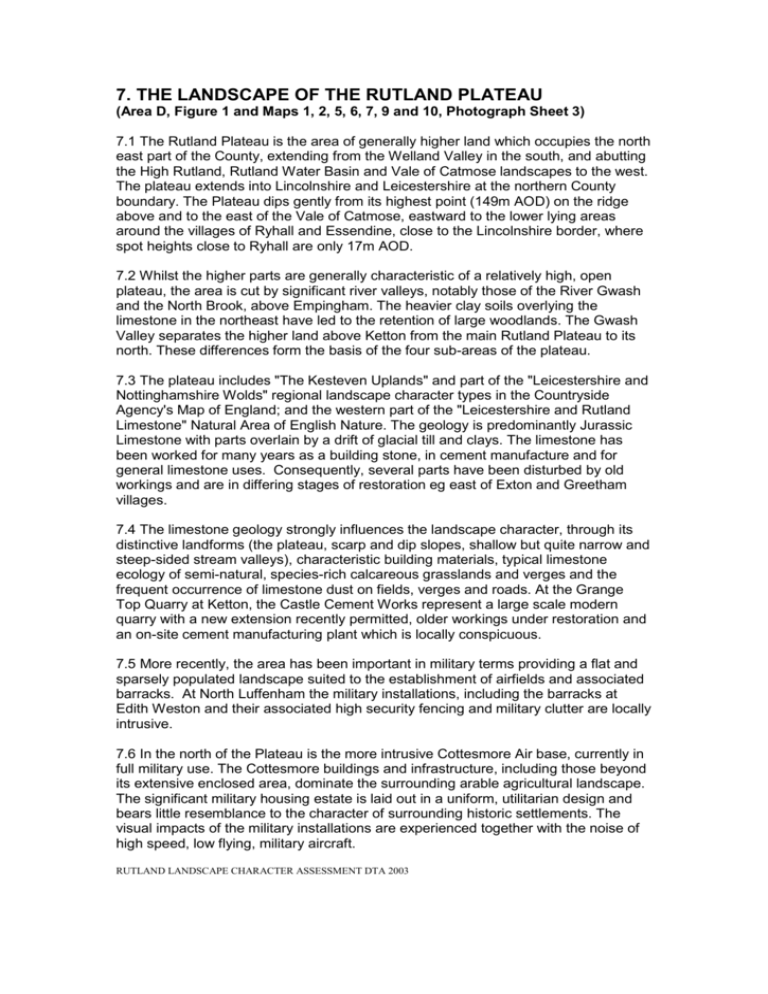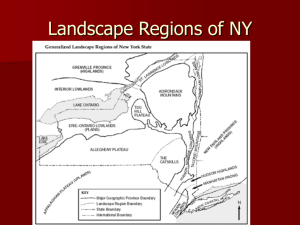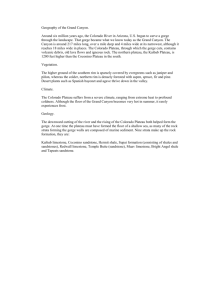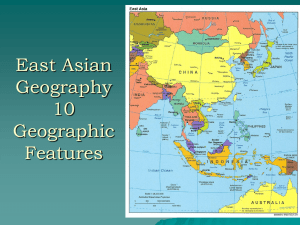Additional Paper 2_13_April_11
advertisement

7. THE LANDSCAPE OF THE RUTLAND PLATEAU (Area D, Figure 1 and Maps 1, 2, 5, 6, 7, 9 and 10, Photograph Sheet 3) 7.1 The Rutland Plateau is the area of generally higher land which occupies the north east part of the County, extending from the Welland Valley in the south, and abutting the High Rutland, Rutland Water Basin and Vale of Catmose landscapes to the west. The plateau extends into Lincolnshire and Leicestershire at the northern County boundary. The Plateau dips gently from its highest point (149m AOD) on the ridge above and to the east of the Vale of Catmose, eastward to the lower lying areas around the villages of Ryhall and Essendine, close to the Lincolnshire border, where spot heights close to Ryhall are only 17m AOD. 7.2 Whilst the higher parts are generally characteristic of a relatively high, open plateau, the area is cut by significant river valleys, notably those of the River Gwash and the North Brook, above Empingham. The heavier clay soils overlying the limestone in the northeast have led to the retention of large woodlands. The Gwash Valley separates the higher land above Ketton from the main Rutland Plateau to its north. These differences form the basis of the four sub-areas of the plateau. 7.3 The plateau includes "The Kesteven Uplands" and part of the "Leicestershire and Nottinghamshire Wolds" regional landscape character types in the Countryside Agency's Map of England; and the western part of the "Leicestershire and Rutland Limestone" Natural Area of English Nature. The geology is predominantly Jurassic Limestone with parts overlain by a drift of glacial till and clays. The limestone has been worked for many years as a building stone, in cement manufacture and for general limestone uses. Consequently, several parts have been disturbed by old workings and are in differing stages of restoration eg east of Exton and Greetham villages. 7.4 The limestone geology strongly influences the landscape character, through its distinctive landforms (the plateau, scarp and dip slopes, shallow but quite narrow and steep-sided stream valleys), characteristic building materials, typical limestone ecology of semi-natural, species-rich calcareous grasslands and verges and the frequent occurrence of limestone dust on fields, verges and roads. At the Grange Top Quarry at Ketton, the Castle Cement Works represent a large scale modern quarry with a new extension recently permitted, older workings under restoration and an on-site cement manufacturing plant which is locally conspicuous. 7.5 More recently, the area has been important in military terms providing a flat and sparsely populated landscape suited to the establishment of airfields and associated barracks. At North Luffenham the military installations, including the barracks at Edith Weston and their associated high security fencing and military clutter are locally intrusive. 7.6 In the north of the Plateau is the more intrusive Cottesmore Air base, currently in full military use. The Cottesmore buildings and infrastructure, including those beyond its extensive enclosed area, dominate the surrounding arable agricultural landscape. The significant military housing estate is laid out in a uniform, utilitarian design and bears little resemblance to the character of surrounding historic settlements. The visual impacts of the military installations are experienced together with the noise of high speed, low flying, military aircraft. RUTLAND LANDSCAPE CHARACTER ASSESSMENT DTA 2003 7.7 The plateau landscape is dissected north to south-east by the A1 trunk road, which through Rutland, follows the line of the original Roman 'Ermine Street'. This intrusion on the character of the area varies in significance and intensity along the road, with some localities markedly affected by the road infrastructure itself and the noise and movement of traffic. 7.8 Whilst there are significant variations in the local character of the plateau landscape character type, it is generally distinguishable by its predominantly arable farming land use. Within the broad, geometric network of large, regular fields, enclosed by thorn hedges, is a well-treed and wooded landscape, interspersed with pasture, particularly close to the plateau settlements and within the river valleys of the Gwash and North Brook. The tree cover frequently restricts and encloses vistas out from, and into, the plateau. 7.9 Over many parts of the Rutland Plateau the intensification of arable farming has led to the loss or decline of drystone walls and hedgerows emphasising the open, windswept, exposed nature of the elevated plateau. Similarly, the loss of landscape features and the generally level or slightly rolling or dipping landform has resulted in a number of farmsteads becoming more exposed and prominent within the arable landscape, often appearing to be 'perched' on the landscape rather than integrated with it. 7.10 Inextricably linked with the plateau's tree cover and occasionally the road network, is the important influence of the parkland and sporting management of the Burley, Exton, Tickencote, and Clipsham estates. These important designed landscapes are particularly concentrated on the plateau north of Rutland Water in a belt extending northeast from the imposing Burley Estate, through Exton and on to Clipsham. Another distinctive feature is the single-sided, broad road verges of the network of lanes resulting from Enclosures Act provisions for specified highway widths. These give the traveller a feeling of openness even on lanes bounded by hedgerows and offer significant ecological interest where unaffected by the adjacent arable farming.






